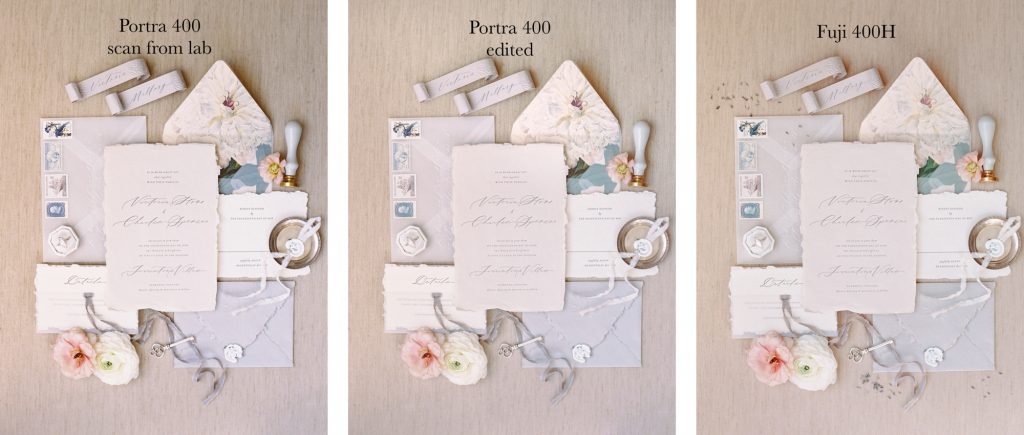Filed in : For Photographers
Fuji 400H has been my go-to film of choice for many years now, so when I saw Fuji’s announcement about it being discontinued I definitely was overcome with many different emotions. First I was in denial, then I became sad and frustrated because it is such a big tool I use to create the “look” I have spent years perfecting. But then once the news settled in, I was excited for the challenge. Because the fact of the matter is, Fuji is just one tool I use when I am creating my work. There is a lot more that goes into the formula! So I decided to tackle the change head-on and move forward. The night of the announcement, I admit I panicked and tried purchasing Fuji from a few different places online. I would add some to my cart, and seconds later it would be gone because I wasn’t the only one trying to buy in bulk. I was able to snag a few pro packs from Amazon before everyone increased the prices. I still didn’t have much Fuji left in my fridge, but I had a plan.
I spent the next few weeks shooting both Fuji 400H alongside Portra 400. I wanted to have the exact same images in both film stocks so I could compare and work towards emulating that Fuji look. I thought it would be helpful for them to have both Fuji 400H and Portra 400 side by side. I tested them in different lighting situations, with different backdrops, different subjects. You name it! Please note I rated Fuji 400H at 200 and Portra 400 at 400 (bulb in).
I had shot Portra in the past but I usually pulled it out when I was shooting indoors or in lower light. I have been studying the differences and really trying to understand how I can emulate those beautiful tones of Fuji that we all love. One helpful tip I wanted to make sure to share is to communicate with your lab. Don’t be afraid to ask questions! They are there to help you and should want to work together through this change. It is going to be a learning curve for sure, but working together will make the process go a lot smoother. If you get scans back and you are able to make your own tweaks to them that you like more, send a side-by-side screenshot to them so they can add that to your file and reference it in the future.
My lab offered to send me the straight Portra 400 scan and this was super helpful to see. On the left, you will see the straight scan. Notice the tweaks the lab did before they sent it to me. The edit on the right is what I did to match it to Fuji 400H as best I could. I had the cutest model for these photos (my son, Gatlin!) 🙂

I added the Fuji 400H scan below so you could better compare and see the full transformation and how close I was able to get to that “fuji look.”

Now there are a lot of factors that play into the final product. Each photographer is going to have different preferences, and each lab is going to have a different way of scanning. You are also able to choose different scanners. These were all scanned on a Frontier scanner to match my preferences.
Below are some more side-by-side comparisons I have created for reference. On the left you will see the scan I received from my lab, the middle is the image with the tweaks I made in Lightroom, and the right is the Fuji 400H.


Portra 400 tends to have more contrast and darker shadows. You can see this in the image on the left. Notice the left side of her face. I have found that playing around with the contrast in Lightroom can help when trying to emulate Fuji 400H.






The greens are also very different when comparing the two film stocks. Fuji has very minty greens, whereas Portra 400’s greens are warmer. You can see this in the images below.

In Lightroom, I use the reference tool to match my scans. I first edit the Fuji photo to my liking, then set it as the reference image. Next, I pull up the Portra 400 image I am trying to match to Fuji and tweak from there. It is helpful to see them next to one another as you are making your edits.


My plan moving forward is to keep testing and shooting side-by-side images so that I can easily compare. I encourage you to do the same if you don’t know where to start and are a little overwhelmed with this change. If you found this blog post helpful please let me know and also feel free to share with other photographers! I am here as a resource to talk through this big change in the industry. You aren’t alone!! Also, if you are interested in a mentor session with me you can find more information here!
Happy shooting!!